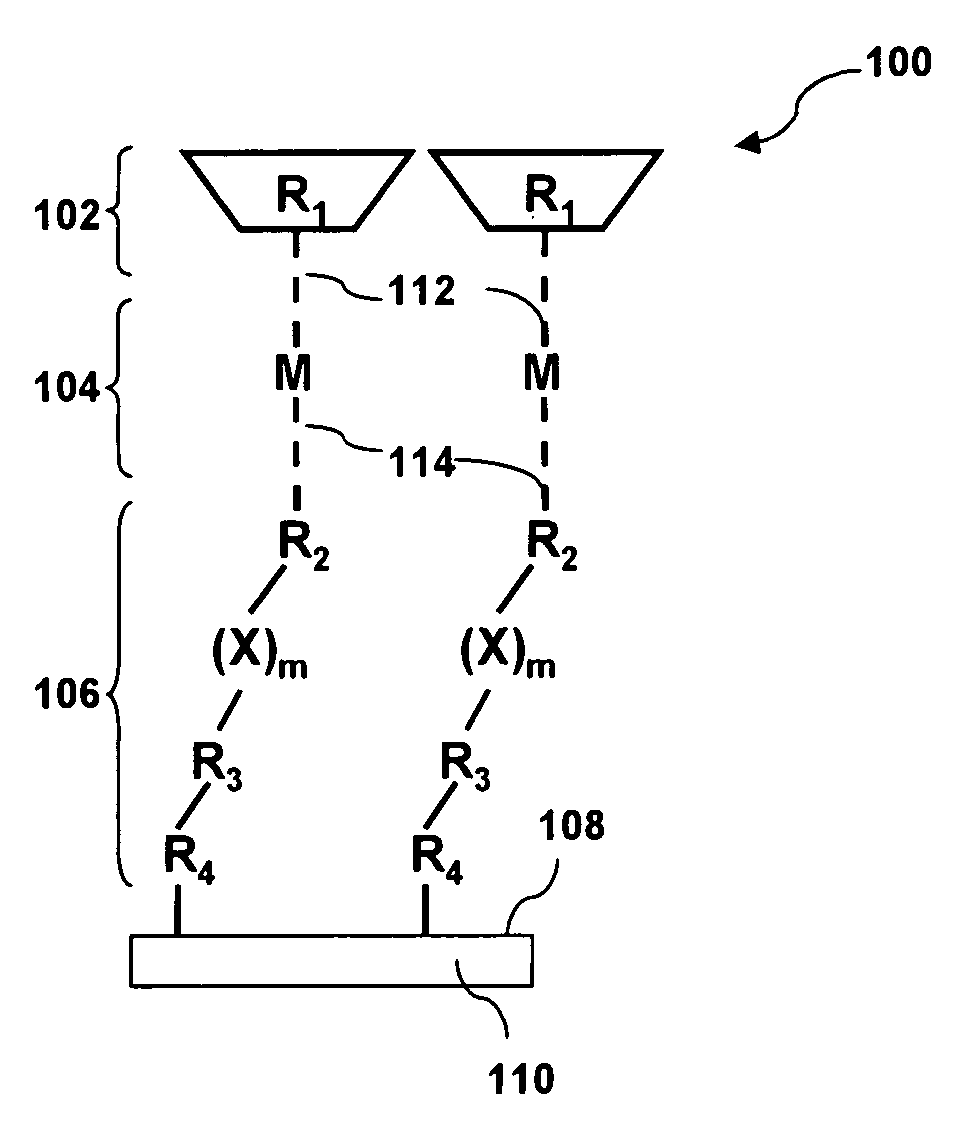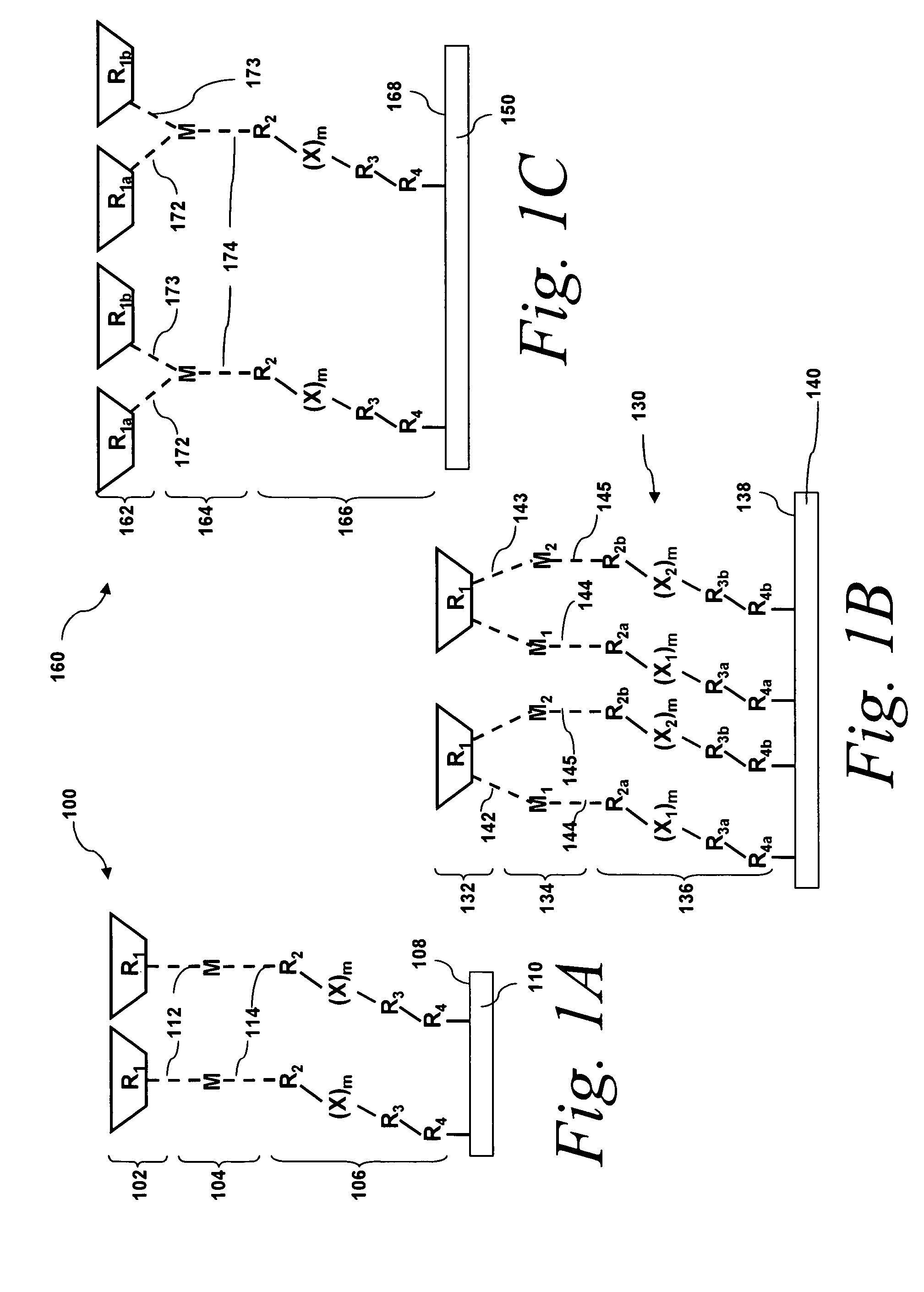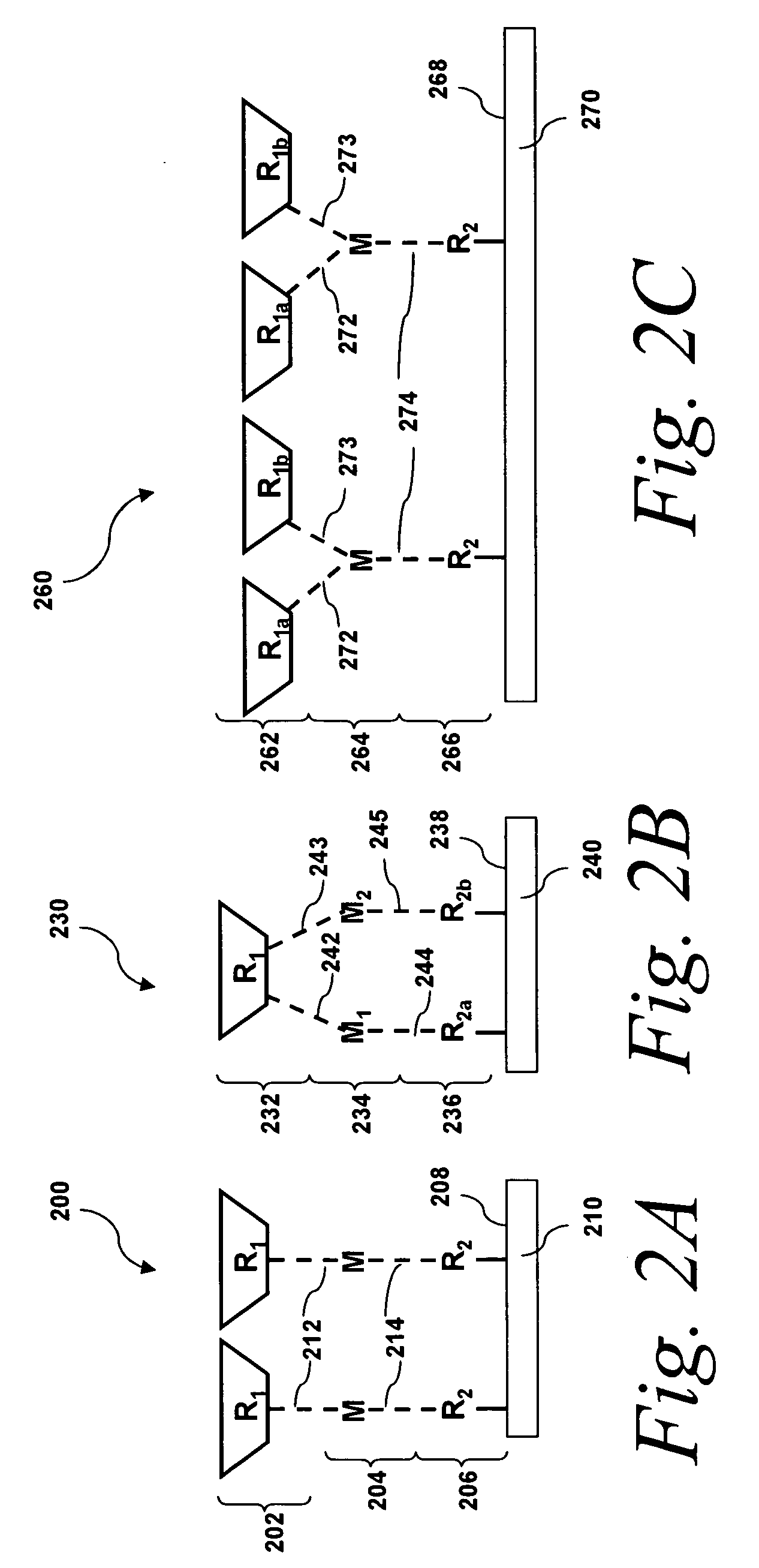Films with photoresponsive wettability
a technology of film and wettability, applied in the field of microfluidics, can solve the problems of inability to achieve the effect of microfluidic scales, reducing the scale of devices, and unable to achieve the effect of reducing the size of devices,
- Summary
- Abstract
- Description
- Claims
- Application Information
AI Technical Summary
Benefits of technology
Problems solved by technology
Method used
Image
Examples
example 1
Alkyl-pyridine-2,6-dicarboxylic, Cu(II), dipyridylethylene films
A. Results and Discussion:
[0163]This example presents various embodiments of assembled substantially monolayer thick molecular films, Films I and II. Films I and II can be schematically illustrated as shown in FIG. 5A. Each film comprises a 2,2′-dipyridylethylene photochromic molecule 508, 514 coupled to a gold surface via a metal atom 502 (Cu (II) which in turn is coupled to a organic tethering molecule 503 (4-[(10-mercaptodecyl)oxy]pyridine-2,6-dicarboxylate) by metal-ligand interactions). Film I 520 being the molecular film with the cis-2,2′-dipyridylethylene photochromic molecule configuration and Film II 522 being the molecular film with the trans-2,2′-dipyridylethylene photochromic molecule configuration.
[0164]Films I and II were fabricated by self assembly of 4-[(10-mercaptodecyl)oxy]pyridine-2,6-dicarboxylic acid on a clean gold surface, followed by the deposition of Cu(II) ions (from CuBr2) that complex with th...
examples 2-5
[0193]In Examples 2-5 suitable organic tethering molecules, surface coupling groups, head groups, tail portions, metals, and photochromic molecules include any of those described herein.
example 2
Formation of Molecular Films on Non-Oxidized Metal Surface
[0194]Referring to FIG. 20, in various embodiments, a method for forming a substantially monolayer thick molecular film of the present invention on a substrate 2002 having a non-oxidized metal surface 2004 (e.g., gold, silver, platinum, etc.), comprises the steps of contacting the surface 2004 with a solution containing an organic tethering molecule, (e.g., of general formula (III)), or coupling group, 2006 having a thiol surface coupling group (here —SH), to produce a substantially monolayer thick organic tethering molecule, or coupling group, surface 2008. Preferably, the surface 2008 is rinsed with a suitable solvent to remove, e.g., impurities and unattached organic tethering molecules or coupling groups, and substantially dried prior to the next step.
[0195]After the surface 2004 is coated with the organic tethering molecule, or coupling group, surface 2008 to the extent desired, the surface 2008 is contacted with a solut...
PUM
| Property | Measurement | Unit |
|---|---|---|
| wavelengths | aaaaa | aaaaa |
| wavelengths | aaaaa | aaaaa |
| contact angle | aaaaa | aaaaa |
Abstract
Description
Claims
Application Information
 Login to View More
Login to View More - R&D
- Intellectual Property
- Life Sciences
- Materials
- Tech Scout
- Unparalleled Data Quality
- Higher Quality Content
- 60% Fewer Hallucinations
Browse by: Latest US Patents, China's latest patents, Technical Efficacy Thesaurus, Application Domain, Technology Topic, Popular Technical Reports.
© 2025 PatSnap. All rights reserved.Legal|Privacy policy|Modern Slavery Act Transparency Statement|Sitemap|About US| Contact US: help@patsnap.com



